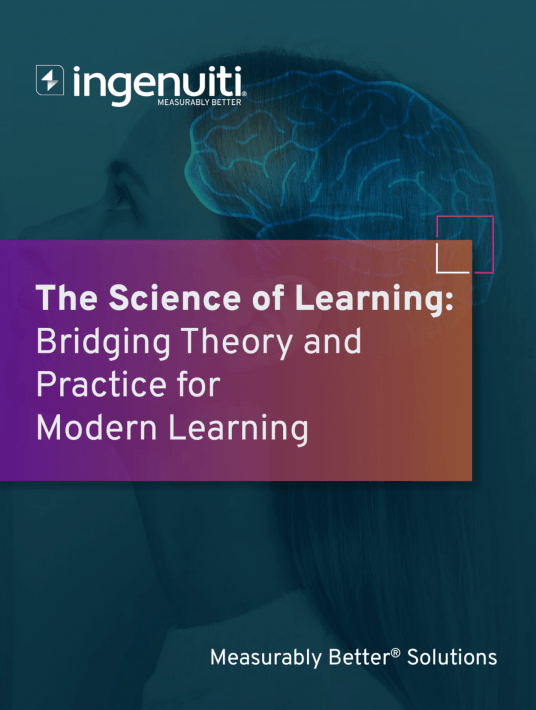
Leveraging Learning Science To Improve Employee Training Strategies
While skills gaps and business objectives often lay the foundation for L&D, sciences build up the framework that helps you achieve your goals and make an impact. This eBook takes a deep dive into the science of learning and how Instructional Designers can evaluate influences such as psychological makeup and language to create engaging training programs.

eBook Release
The Science Of Learning: Bridging Theory And Practice For Modern Learning
Explore how cognitive science, psychology, sociology, linguistics, and behavioral science can enhance Instructional Design.
The Science Of Learning: Forming The Connection Between Sciences And L&D
Cognitive science, psychology, sociology, linguistics, consumer science, and behavioral science are the key areas Instructional Designers should consider when developing their curriculum. This allows you to provide a more holistic experience that resonates with employees and improves knowledge retention. For example, applying cognitive science gives you the opportunity to evaluate whether learners have a sufficient amount of time to reflect and absorb the information. On the other hand, consumer science involves assessing whether other factors or tasks might be competing for their attention.
About This eBook
How important is motivation in L&D? In what ways do cultural identity and background impact the learning experience? What are the benefits of creating training programs that are scientifically validated? Here’s a brief glimpse of what you’ll find in this guide by Ingenuiti:
- Cognitive Science And Learning: Delve into how cognitive science can inform Instructional Design. You’ll also uncover some practical tips for creating effective learning experiences, including using shorter modules, reflective opportunities, and just-in-time learning to align with how the brain processes and retains information.
- Integrating Sociology Into Instructional Design: This section highlights how sociological principles, such as social structures and cultural norms, can enhance Instructional Design. It also maps out strategies, including using culturally relevant examples, addressing social inequalities, and designing materials that promote a sense of belonging and teamwork among diverse learner groups.
- Modern Learning Methods From Behavioral Science: Examine how behavioral science can improve learning outcomes through strategies like isolating specific behaviors, chunking content, using reinforcement, and incorporating behavioral modeling. We also emphasize the importance of practice with immediate feedback and spaced repetition to encourage skill retention and application.
Get Your Copy
Download The Science Of Learning: Bridging Theory And Practice For Modern Learning today to explore how the intersection between sciences and learning can be a game changer in L&D.